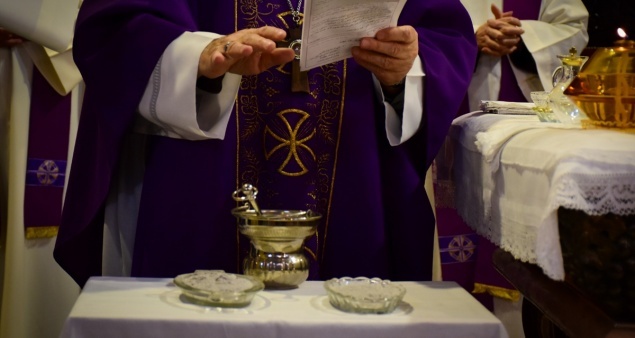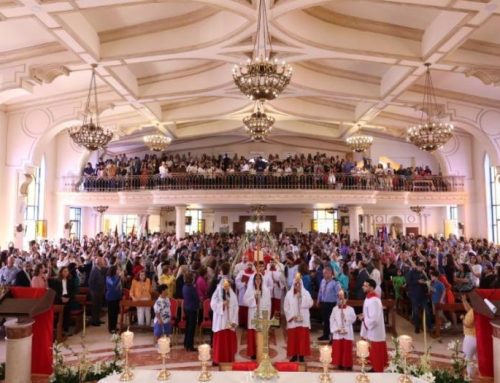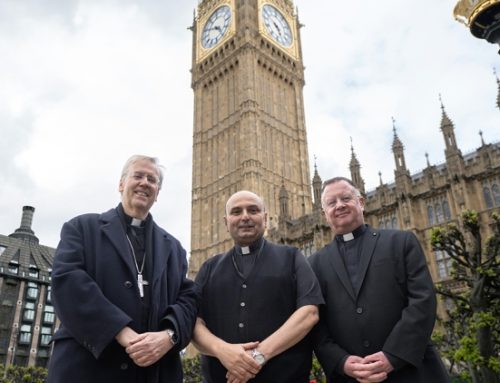Fasting is a biblical tradition that appeared in the two covenants, but it is also a practice that developed and varied according to time and place. I will not dwell in detail on fasting from a biblical point of view, its spirituality and its meanings, because the aim of this presentation is to provide a comprehensive and short panoramic view of the “methods of fasting and their development throughout history” since Judaism to early Christianity and even the Latin Church in our contemporary times. If we turn to the Bible, it is only to clarify this aspect.
1. The Jewish Fasting (תַעֲנִית or צום )
1.1. Fasting has three different goals in Judaism:
a. Atonement for sins: ex. Yom Kippur / Teshaa Ba ab.
b. Mourning or remembering a traumatic event: ex. the destruction of the Temple
c. Gratitude: Focus on the essential. God is the source of life and food, and thus fasting becomes an acknowledgment of our dependence on God and our need for Him.
1.2. Interpretations differed within the Talmud and the Midrash regarding the forms of fasting, but we find almost consensus on the following:
a. Complete fasting: from sunset until darkness of the next day, no food and drink (Yom Kippur and Teshaa Ba ab).
b. Little fasting: from sunrise until sunset (some specific holy days).
* Fasting of Jesus: Some believe that Jesus fasted only from food, not from water, because the Bible said that he was hungry, and not he was thirsty. Some commentators see this story as a literary genre, and should not be taken literally.
2. The evolution of fasting in Christianity
From the beginning, fasting varied and differed from one region to another, and even within the same region. Even researchers in our time believe that the forty-day fasting came gradually, and that it was not always fixed in duration, as they cite Irenius’s letter to Pope Victor in the second century, mentioned in Eusebius of Caesarea’s Ecclesiastical History Book: “Some believe that they should fast for one day, and others For two days, and even others for several days, while others count forty hours day and night for their fasting.” Let us follow some of the most important sources in the Church tradition:
2.1. The Bible: In the Old Testament, Moses and Elijah fasted for 40 days. In the New Testament, Jesus fasted for 40 days. And the Acts of the Apostles Book (9: 9) states that Paul stayed for three days, “neither eating nor drinking,” after Jesus appeared to him on the road to Damascus and made him blind.
2.2. The Book of the Didakhe or the Teaching of the Twelve Apostles: A book from the first century, in chapter eight of it, the issue of fasting is addressed in only two points:
a. The prohibition of fasting with the hypocrites on Mondays and Thursdays of every week.
b. That a complete fast is observed on Wednesdays and Fridays.
2.3. The Shepherd of Hermas (mid-second century): “Listen, for God does not want a void fast like this one; if you fast like this, then you do nothing for righteousness. And do not leave evil lust an outlet in your heart, and trust God. If you do this and fear God, then you will have fasted a great fast that is acceptable to God”.
2.4. Gnosticism: Heresy that disdained the body and the concept of fasting about it was based on this negative view of the body.
2.5. Tertullian: He talked a lot about fasting, and he distinguished specifically between two types of fasting at noon in the early church: “eating bread and dried fruits” (Xérophagie) and the “Stations” fast that stopped at nine the ninth hour, not sunset.
2.6. Fathers of the Desert: Forms of fasting that approximate myths! Such as eating one basket of bread all year round, or incense ash with bread or desert herbs … etc.
2.7. St. Benedict’s monastic Rule: St. Benedict dealt with fasting in the following chapters of his Rule of Monls: 39 – 41, 49, 51 as follows:
CHAPTER XXXIX
Of the Quantity of Food
Making allowance for the infirmities of different persons, we believe that for the daily meal, both at the sixth and the ninth hour, two kinds of cooked food are sufficient at all meals; so that he who perchance cannot eat of one, may make his meal of the other. Let two kinds of cooked food, therefore, be sufficient for all the brethren. And if there be fruit or fresh vegetables, a third may be added. Let a pound of bread be sufficient for the day, whether there be only one meal or both dinner and supper. If they are to eat supper, let a third part of the pound be reserved by the Cellarer and be given at supper.
If, however, the work hath been especially hard, it is left to the discretion and power of the Abbot to add something, if he think fit, barring above all things every excess, that a monk be not overtaken by indigestion. For nothing is so contrary to Christians as excess, as our Lord saith: “See that your hearts be not overcharged with surfeiting” (Lk 21:34).
Let the same quantity of food, however, not be served out to young children but less than to older ones, observing measure in all things.
But let all except the very weak and the sick abstain altogether from eating the flesh of four-footed animals.
CHAPTER XL
Of the Quantity of Drink
“Every one hath his proper gift from God, one after this manner and another after that” (1 Cor 7:7). It is with some hesitation, therefore, that we determine the measure of nourishment for others. However, making allowance for the weakness of the infirm, we think one hemina of wine a day is sufficient for each one. But to whom God granteth the endurance of abstinence, let them know that they will have their special reward. If the circumstances of the place, or the work, or the summer’s heat should require more, let that depend on the judgment of the Superior, who must above all things see to it, that excess or drunkenness do not creep in.
Although we read that wine is not at all proper for monks, yet, because monks in our times cannot be persuaded of this, let us agree to this, at least, that we do not drink to satiety, but sparingly; because “wine maketh even wise men fall off” (Sir 19:2). But where the poverty of the place will not permit the aforesaid measure to be had, but much less, or none at all, let those who live there bless God and murmur not. This we charge above all things, that they live without murmuring.
CHAPTER XLI
At What Times the Brethren Should Take Their Refection
From holy Easter till Pentecost let the brethren dine at the sixth hour and take supper in the evening. From Pentecost on, however, during the whole summer, if the monks have no work in the fields and the excess of the heat doth not interfere, let them fast on Wednesday and Friday until the ninth hour; but on the other days let them dine at the sixth hour. This sixth hour for dinner is to be continued, if they have work in the fields or the heat of the summer is great. Let the Abbot provide for this; and so let him manage and adapt everything that souls may be saved, and that what the brethren do, they may do without having a reasonable cause to murmur. From the ides of September until the beginning of Lent let them always dine at the ninth hour. During Lent, however, until Easter, let them dine in the evening. But let this evening hour be so arranged that they will not need lamp-light during their meal; but let everything be finished whilst it is still day. But at all times let the hour of meals, whether for dinner or for supper, be so arranged that everything is done by daylight.
CHAPTER XLIX
On the Keeping of Lent
The life of a monk ought always to be a Lenten observance. However, since such virtue is that of few, we advise that during these days of Lent he guard his life with all purity and at the same time wash away during these holy days all the shortcomings of other times. This will then be worthily done, if we restrain ourselves from all vices. Let us devote ourselves to tearful prayers, to reading and compunction of heart, and to abstinence.
During these days, therefore, let us add something to the usual amount of our service, special prayers, abstinence from food and drink, that each one offer to God “with the joy of the Holy Ghost” (1 Thes 1:6), of his own accord, something above his prescribed measure; namely, let him withdraw from his body somewhat of food, drink, sleep, speech, merriment, and with the gladness of spiritual desire await holy Easter.
Let each one, however, make known to his Abbot what he offereth and let it be done with his approval and blessing; because what is done without permission of the spiritual father will be imputed to presumption and vain glory, and not to merit. Therefore, let all be done with the approval of the Abbot.
CHAPTER LI
Of the Brethren Who Do Not Go Very Far Away
A brother who is sent out on any business and is expected to return to the monastery the same day, may not presume to eat outside, even though he be urgently requested to do so, unless, indeed, it is commanded him by his Abbot. If he act otherwise, let him be excommunicated.
2.8. Saint Thomas Aquinas (Summa Theologiae II-II 147 and In IV Sent. D. 15, q. 3, a. 1, qa. 2): There are three objectives for fasting:
a. killing lust;
b. raising the soul and contemplating heavenly matters;
c. to compensate for our sins.
Aquinas (and Francis of Sales) warns against practicing “the thief’s fast,” meaning exaggeration in fasting, vigil at the expense of the health of the body, and the fulfillment of duties, on top of which is “charity” (to which Pope Paul VI will return). Aquinas also noted the freedom of every person to determine his fast, with the obligation to respect the days when the church asks believers to fast, and to avoid meat, eggs and milk.
2.9. The Middle Ages: Fasting in the forty-day period, during the late Middle Ages, extended to 46 days instead of 40 as it included 40 days in addition to the six Sundays. Some sources mention that Ash Wednesday and Good Friday were “black fasting” days, meaning that food was never allowed in them (except for the elderly and sick, of course). During these forty days it was not allowed to eat meat, not even on Sunday. It was also forbidden to eat most of the products taken from milk in addition to eggs. During Lent, the majority of the European population was fed on bread, vegetables, salt, beer and wine (healthier than water at the time), and some abstained from eating any meal until Nona. Nona was later moved to midday, and one could only interrupt one’s fast after Vespers. The idea of small meals (collations) was later introduced.
2.10. The Four Times (Ember days / Quatuor Tempora / les Quatres-Temps): Four weeks of the year, representing the various seasons, during which fasting is carried out on Wednesdays, Fridays and Saturdays:
A) The week following the first Sunday of Lent
B) The week of Pentecost before the Feast of the Trinity
C) The week following the exaltation of the cross
D) The week following the third Sunday of Advent.
2.11. The Codes of Canon Law of 1917 (see in French).
TITLE 14: ABSTINENCE AND FASTING (1250 – 1254)
1250 The law of abstinence forbids eating meat and meat juice, but not eggs, dairy products and all the condiments drawn from the fat of animals
1251
§1 The law of fasting prescribes that only one meal be made per day; but it does not forbid taking a little food morning and evening, while observing however the approved custom of the place, relative to the quantity and quality of the food.
§2 It is not forbidden to eat meat and fish at the same meal; nor to replace the evening repair by the midday one.
1252
§1 There are days when only abstinence is prescribed: these are Fridays of each week.
§2 There are days when both fasting and abstinence are prescribed: they are Ash Wednesday, Fridays and Saturdays of Lent, the days of the Four Times; The vigils of Pentecost, of the Assumption, All Saints and Christmas.
§3 Finally, there are days when only fasting is prescribed; these are all the days of Lent.
§4 The law of abstinence, or of abstinence and fasting, or of fasting alone, ceases on Sundays and feasts of precept, except the feasts which fall in Lent and vigils are not anticipated; this law also ceases on Holy Saturday from noon.
1253 By these canons nothing is changed as regards the particular indults, the wishes of any physical or moral person, the rules and constitutions of any approved religion or institute, whether men or women, living in common, even if they haven’t made a vow.
1254
§1 All those who have reached the age of seven are obliged by law to abstain.
§2 By the law of fasting, those who have completed their twenty-first year until the beginning of their sixtieth year.
2.12. The Church after the Second Vatican Council:
a. Pope St. Paul VI (Paenitemini 1966): Focuses on “repentance” in fasting, which comes first from the “inner life”. Is a Metanoya.
– “The prominent religious and internal character of repentance and the new wondrous aspects that are supposed to be “in Christ and the Church” neither exclude nor diminish in any way the external practice of this virtue, but on the contrary, stresses the necessity of its existence with special urgency. On the other hand, it shall seek, beyond fasting and piety, to use new expressions more appropriate to achieve the precise goal of repentance, according to the character of different ages. “True remorse, however, can never be overlooked by physical continence either.”
– “This bodily mortification – far removed from any form of stoicism – does not mean condemning the body that has been taken by the condescending Son of God. On the contrary, the mortification aims to “liberate” the human being, who often finds himself, due to lust, bound to an extent. What is chained through his own senses, through “physical fasting,” a person regains his strength.
CHAPTER III
Therefore the Church—while it reaffirms the primacy of the religious and supernatural values of penitence (values extremely suitable for restoring to the world today a sense of the presence of God and of His sovereignty over man and a sense of Christ and His salvation)(55)—invites everyone to accompany the inner conversion of the spirit with the voluntary exercise of external acts of penitence:
A — It insists first of all that the virtue of penitence be exercised in persevering faithfulness to the duties of one’s state in life, in the acceptance of the difficulties arising from one’s work and from human coexistence, in a patient bearing of the trials of earthly life and of the utter insecurity which pervades it.(56)
B — Those members of the Church who are stricken by infirmities, illnesses, poverty or misfortunes, or who are persecuted for the love of justice, are invited to unite their sorrows to the suffering of Christ in such a way that they not only satisfy more thoroughly the precept of penitence but also obtain for the brethren a life of grace and for themselves that beatitude which is promised in the Gospel to those who suffer.(57)
C — The precept of penitence must be satisfied in a more perfect way by priests, who are more closely linked to Christ through sacred character, as well as by those who in order to follow more closely the abnegation of the lord and to find an easier and more efficacious path to the perfection of charity practice the evangelical counsels.(58)
The Church, however, invites all Christians without distinction to respond to the divine precept of penitence by some voluntary act, apart from the renunciation imposed by the burdens of everyday life.(59)
To recall and urge all the faithful to the observance of the divine precept of penitence, the Apostolic See intends to reorganize penitential discipline with practices more suited to our times. It is up to the bishops—gathered in their episcopal conferences—to establish the norms which, in their pastoral solicitude and prudence, and with the direct knowledge they have of local conditions, they consider the most opportune and efficacious. The following, however is established:
In the first place, Holy Mother Church, although it has always observed in a special way abstinence from meat and fasting, nevertheless wants to indicate in the traditional triad of “prayer—fasting—charity” the fundamental means of complying with the divine precepts of penitence. These means were the same throughout the centuries, but in our time there are special reasons whereby, according to the demands of various localities, it is necessary to inculcate some special form of penitence in preference to others.(60) Therefore, where economic well-being is greater, so much more will the witness of asceticism have to be given in order that the sons of the Church may not be involved in the spirit of the “world,”(61) and at the same time the witness of charity will have to be given to the brethren who suffer poverty and hunger beyond any barrier of nation or continent.(62) On the other hand, in countries where the standard of living is lower, it will be more pleasing to God the Father and more useful to the members of the Body of Christ if Christians—while they seek in every way to promote better social justice—offer their suffering in prayer to the Lord in close union with the Cross of Christ.
Therefore, the Church, while preserving—where it can be more readily observed—the custom (observed for many centuries with canonical norms) of practicing penitence also through abstinence from meat and fasting, intends to ratify with its prescriptions other forms of penitence as well, provided that it seems opportune to episcopal conferences to replace the observance of fast and abstinence with exercises of prayer and works of charity.
In order that all the faithful, however, may be united in a common celebration of penitence, the Apostolic See intends to establish certain penitential days and seasons(63) chosen among those which in the course of the liturgical year are closer to the paschal mystery of Christ(64) or might be required by the special needs of the ecclesial community.(65)
Therefore, the following is declared and established:
I. 1. By divine law all the faithful are required to do penance.
2. The prescriptions of ecclesiastical law regarding penitence are totally reorganized according to the following norms:
II. 1. The time of Lent preserves its penitential character. The days of penitence to be observed under obligation throughout the Church are all Fridays and Ash Wednesday, that is to say the first days of “Grande Quaresima” (Great Lent), according to the diversity of the rites. Their substantial observance binds gravely.
2. Apart from the faculties referred to in VI and VIII regarding the manner of fulfilling the precept of penitence on such days, abstinence is to be observed on every Friday which does not fall on a day of obligation, while abstinence and fast is to be observed on Ash Wednesday or, according to the various practices of the rites, on the first day of “Grande Quaresima” (Great Lent) and on Good Friday.
III. 1. The law of abstinence forbids the use of meat, but not of eggs, the products of milk or condiments made of animal fat.
2. The law of fasting allows only one full meal a day, but does not prohibit taking some food in the morning and evening, observing—as far as quantity and quality are concerned—approved local custom.
IV. To the law of abstinence those are bound who have completed their 14th year of age. To the law of fast those of the faithful are bound who have completed their 21st year and up until the beginning of their 60th year.
As regards those of a lesser age, pastors of souls and parents should see to it with particular care that they are educated to a true sense of penitence.
IX. 1. It is strongly desired that bishops and all pastors of souls, in addition to the more frequent use of the sacrament of penance, promote with zeal, particularly during the Lenten season, extraordinary practices of penitence aimed at expiation and impetration.
2. It is strongly recommended to all the faithful that they keep deeply rooted in their hearts a genuine Christian spirit of penitence to spur them to accomplish works of charity and penitence.
b. Catechism of the Catholic Church: The Church’s Fourth Commandment (2043), in which the triple goal of fasting appears: preparation for the celebration of liturgical feasts / preparation for controlling our passions / freedom of the heart:
“The fourth precept (“You shall observe the days of fasting and abstinence established by the Church”) ensures the times of ascesis and penance which prepare us for the liturgical feasts and help us acquire mastery over our instincts and freedom of heart.”
c. The Code of Canon Law 1983 : N. 1249-1253.
They include:
1. Fasting and Abstinence days for “adults” until the age of 60.
2. Abstinence days for those aged 14 and over.
3. Days characterized by the “character of repentance”: for all ages.
Can. 1249 The divine law binds all the Christian faithful to do penance each in his or her own way. In order for all to be united among themselves by some common observance of penance, however, penitential days are prescribed on which the Christian faithful devote themselves in a special way to prayer, perform works of piety and charity, and deny themselves by fulfilling their own obligations more faithfully and especially by observing fast and abstinence, according to the norm of the following canons.
Can. 1250 The penitential days and times in the universal Church are every Friday of the whole year and the season of Lent.
Can. 1251 Abstinence from meat, or from some other food as determined by the Episcopal Conference, is to be observed on all Fridays, unless a solemnity should fall on a Friday. Abstinence and fasting are to be observed on Ash Wednesday and Good Friday.
Can. 1252 The law of abstinence binds those who have completed their fourteenth year. The law of fasting binds those who have attained their majority, until the beginning of their sixtieth year. Pastors of souls and parents are to ensure that even those who by reason of their age are not bound by the law of fasting and abstinence, are taught the true meaning of penance.
Can. 1253 The conference of bishops can determine more precisely the observance of fast and abstinence as well as substitute other forms of penance, especially works of charity and exercises of piety, in whole or in part, for abstinence and fast.
d. Diocese of the Latin Patriarchate of Jerusalem: Cf. Patriarch Fouad Al-Twal’s message for the time of Lent, 2014.
Conclusion
What the Church prescribes, as a Mother and Educator of the Faith, is the “minimum” that a Christian may need in order to grow in Christian faith and spiritual life. Therefore, it goes without saying that each Christian has the possibility and the right, but even is encouraged, to add whatever comes from his generous heart, either by new intuitions or simply by rediscovering the old traditions of the Church, which are in harmony with the Faith of the Church, and always under the guidance of a sure spiritual director, in order to avoid unhealthy exaggerations.
Wish to all a blessed Lent!
By: Fr. Firas Abedrabbo
Source: Latin Patriarchate of Jerusalem






